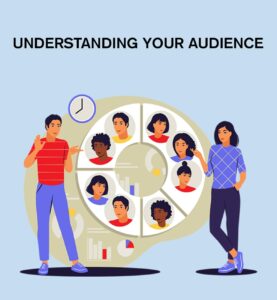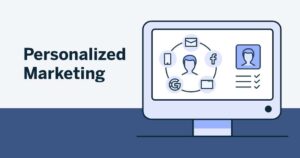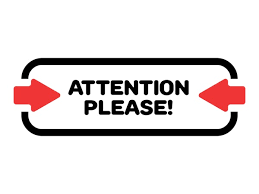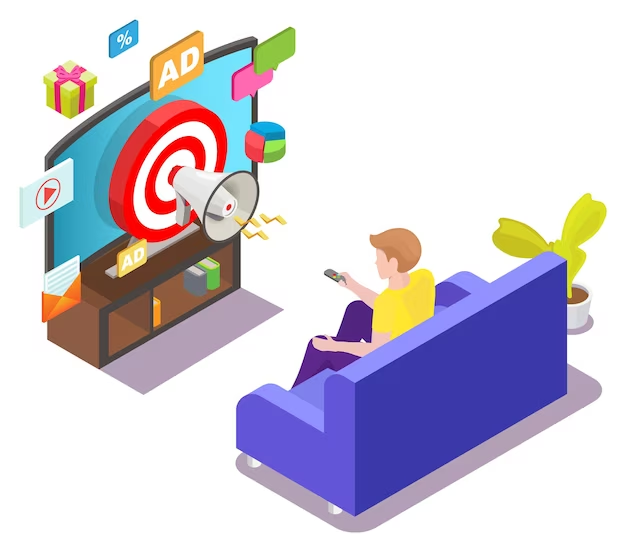How to Create Highly Targeted Ad Copies:
Crafting highly targeted ad copy is a critical skill for any marketer looking to maximize return on ad spend (ROAS). Targeted ads yield higher click-through rates (CTR), conversions, and engagement by resonating directly with the audience’s needs and pain points. Below is a detailed guide to help you create compelling, results-driven ad copies that speak directly to specific audience segments.

1. Deeply Understand Your Audience
Creating targeted ad copy starts with having a profound understanding of your audience. This goes beyond basic demographic data and delves into psychographic and behavioral insights that reveal what drives their purchasing decisions.
- Conduct In-Depth Audience Research: Utilize tools like Google Analytics, Facebook Audience Insights, and surveys to gather data on your audience’s age, location, gender, income, and interests. But don’t stop there—investigate their online behaviors, including what they search for, the type of content they engage with, and the specific problems they are trying to solve.
- Segment Your Audience Thoughtfully: Use your gathered data to segment your audience into smaller, well-defined groups based on traits like interests, purchasing behavior, or pain points. For example, if you’re selling fitness equipment, one segment might include beginners interested in weight loss, while another targets athletes looking to enhance performance.
- Develop Detailed Buyer Personas: Craft buyer personas—semi-fictional representations of your ideal customers. For each persona, detail their goals, challenges, values, and how your product/service fits into their lives. The more detailed your personas, the easier it will be to create tailored ad messages that resonate with their specific needs.

2. Focus on Audience Pain Points and Solutions
For your ad to be effective, it must address the specific problems your audience faces. People engage with ads that speak directly to their challenges and offer clear solutions.
- Identify and Highlight Pain Points: Start your ad by addressing a problem your target audience is struggling with. For example, if you sell project management software, begin with a line like, “Tired of missing deadlines and managing disorganized tasks?” This grabs attention by showing you understand their frustration.
- Position Your Product as the Solution: After acknowledging the problem, present your product as the ideal solution. Emphasize the benefits—not just the features—of your offering. For instance, instead of saying, “Our software tracks tasks,” say, “Stay organized and meet every deadline with our automated tracking and real-time collaboration tools.” This highlights how your product solves the audience’s problem.

3. Adopt a Conversational and Personalized Tone
Your ad should feel like a conversation with the reader, rather than a sales pitch. A personalized tone makes the message more engaging and relevant.
- Use Second-Person Language: Incorporate words like “you” and “your” to make the copy feel personal. For instance, say, “You can streamline your projects effortlessly,” instead of, “Our tool helps businesses streamline projects.” This shift creates a direct connection with the reader.
- Match the Audience’s Tone: Tailor your tone to the preferences of your audience. For a younger, casual audience, you may use a lighthearted and playful tone. In contrast, for a more professional audience, such as C-suite executives, a formal, authoritative tone may be more effective.
- Tap into Emotions: Emotional appeals can be incredibly powerful in ad copy. Whether your audience is driven by fear (e.g., “Don’t miss out on this exclusive offer!”), aspiration (e.g., “Take your career to the next level with our advanced course!”), or excitement, triggering their emotions can make your ad more compelling.

4. Create Attention-Grabbing Headlines
Your headline is the first thing potential customers see, and it often determines whether they’ll engage with your ad. An impactful headline is essential to drawing the reader in.
- Use Power Words: Leverage emotionally charged power words like “free,” “exclusive,” “proven,” or “new” to grab attention. For instance, “Unlock Exclusive Savings Today” is much more engaging than a simple “Save Now”.
- Be Specific and Credible: Specificity adds credibility to your headline. Instead of saying, “Get More Leads,” opt for “Generate 50+ Qualified Leads in Just 30 Days.” This makes the claim more tangible and believable.
- Promise a Clear Benefit: Make sure the headline clearly promises a benefit. If your audience knows exactly what they’ll gain by clicking, they’re more likely to engage. Examples include, “Boost Your Productivity by 30%” or “Lose 10 Pounds in Just 4 Weeks.”

5. Use Strong, Actionable Calls to Action (CTAs)
Your call to action should guide your audience to take the next step. A clear, actionable CTA is essential for driving conversions.
- Incorporate Action-Oriented Language: Use verbs that encourage immediate action, such as “Sign Up Now,” “Get Started Today,” or “Claim Your Free Trial.” Avoid passive or ambiguous language—your CTA should tell users exactly what to do next.
- Create a Sense of Urgency: Use time-sensitive language to prompt users to act quickly. Phrases like “Limited Time Offer,” “Only Available Today,” or “Hurry, Don’t Miss Out!” create a sense of urgency and FOMO (fear of missing out).
- Clarify the Next Step: Be explicit about what happens next. For instance, “Download the App,” “Shop Now,” or “Start Your Free Trial” leaves no room for confusion, guiding the user toward the desired action.

6. Incorporate Social Proof and Trust Signals
People trust the experiences of others. Social proof reassures potential customers that your product or service is worth their investment.
- Use Testimonials and Reviews: Showcase positive feedback from satisfied customers. Testimonials such as “Loved by 10,000+ happy clients” or “Rated 5 stars by industry professionals” lend credibility to your ad and help build trust.
- Leverage Data and Numbers: Numbers make your claims more convincing. For example, “500+ companies trust our software to streamline their operations” or “Over 10,000 successful downloads worldwide” adds authority to your ad and strengthens its persuasive power.

7. Test and Optimize Your Ad Copies
No matter how well-crafted your ad copy is, continuous testing and optimization are key to improving performance over time.
- A/B Testing for Continuous Improvement: Create different versions of your ad and test them against each other. Experiment with different headlines, CTAs, and messages to find the best-performing combination. For instance, you might test “Get Your Free Trial Today” against “Claim Your Free Trial Now” to see which CTA generates more clicks.
- Monitor Key Performance Metrics: Regularly track your ad’s performance through CTR, conversion rates, and cost-per-conversion metrics. Use this data to identify what’s working and where there’s room for improvement.
- Iterate and Adjust: Based on the data from your tests, tweak and adjust your ad copy to better meet your audience’s needs. Constantly improving your ad copy through optimization will lead to higher conversions and better ROI.

Conclusion
Creating highly targeted ad copies that resonate with your audience requires a deep understanding of their needs, challenges, and desires. By focusing on audience segmentation, crafting emotional and benefit-driven headlines, using strong calls to action, and consistently testing and optimizing your approach, you can produce high-converting ad copies that drive results. With a data-driven mindset and commitment to improvement, your ad campaigns will continue to evolve and thrive, delivering maximum impact for your business.



